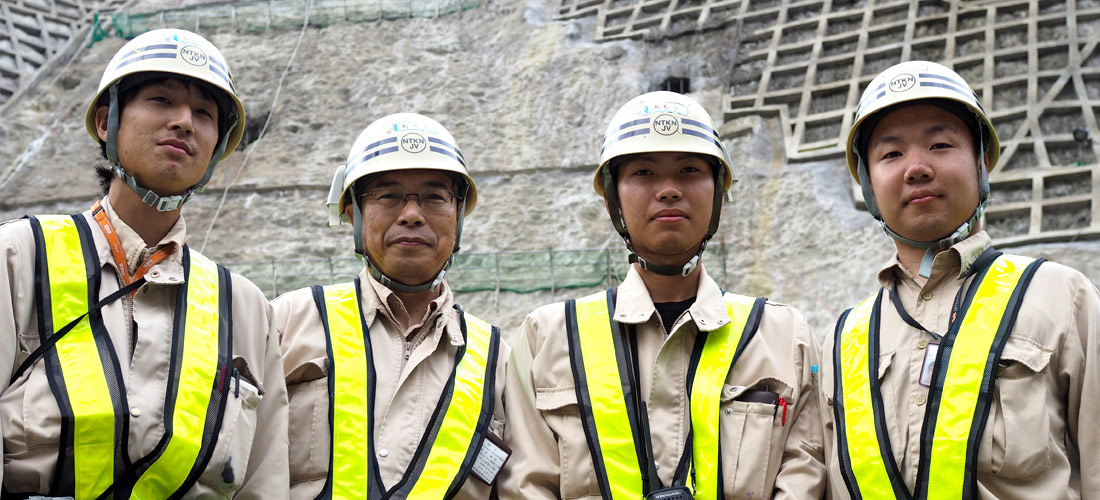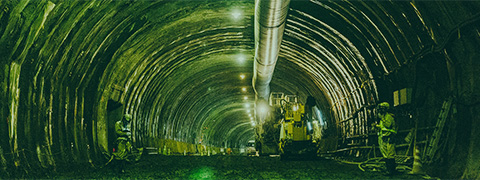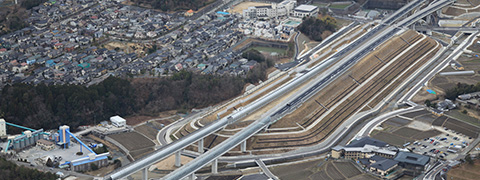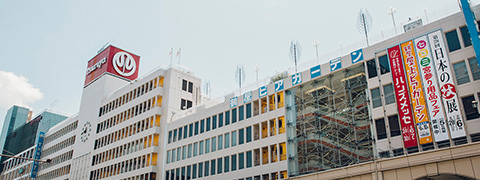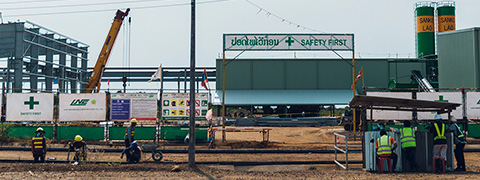
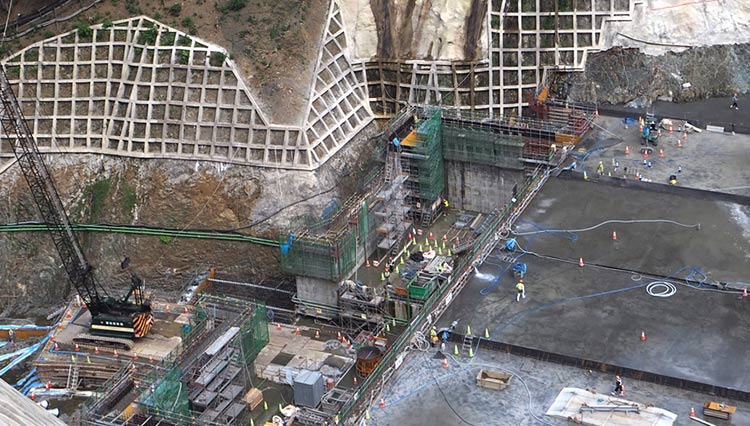
Building a long-awaited dam together with the local community
The Kouchigawa Dam Construction Project (Dam Body Works)
The Kouchigawa Dam Construction Project was approved in 1987, but actual construction did not begin until 2012.
Local residents long waited nearly 30 years for the building of a dam they hoped would consistently keep flooding under control and stimulate the local economy.
We are moving forward with the construction of a dam, driven by the desire to fulfill the wishes of the local community that has waited so long.
The Kouchigawa Dam Construction Work
Flood control, maintaining the normal functions of water flow, specified irrigation water, city water, and industrial water
41.5 billion yen (jointly covered by the national government, the Fukui Prefectural Government, the Obama City Government, and the Wakasa-cho Town Government)
Kumagawa, Wakasa-cho, Mikatakaminaka-gun, Fukui Prefecture
Fukui Prefectural Government
December 18, 2012 to May 31, 2019
Gravity concrete dam
Foundation excavation work: 202,850m2 (soil and stone excavation: 176,100 m2, rock excavation: 26,750 m2)
Dam body work: 257,200m2 (dam body: 251,740 m2, energy dissipater: 5,460 m2)
Foundation treatment work (1) (consolidation grouting: 251,740 m2, curtain: 30,868 m2)
Closure work (1) (an adit, temporary drainage channels inside and outside the dam body, and a conduit for power generation)
Turbid water treatment (1)
Miscellaneous work (1)
Temporary facility work (1)
50,000 tons of cement
540,000 tons of concrete aggregate
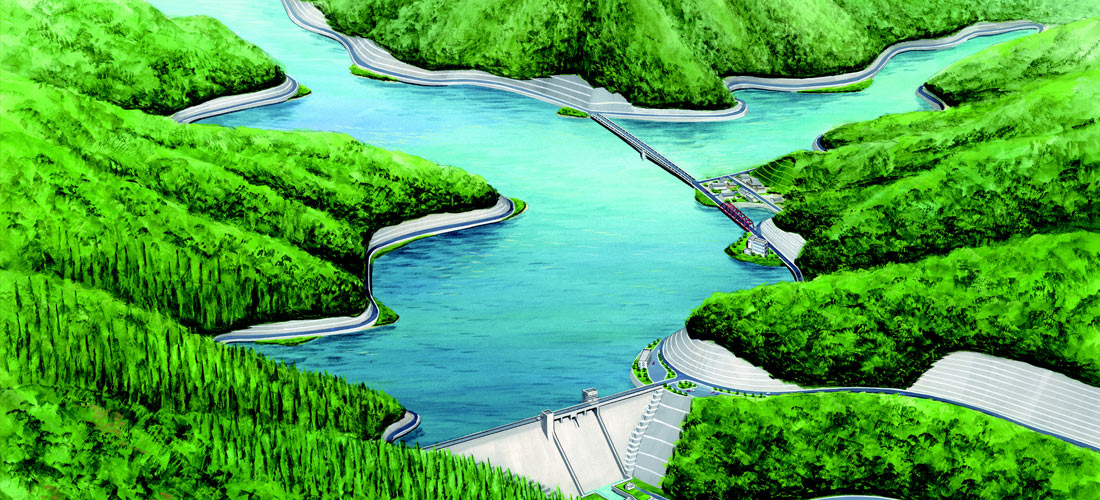
For local residents who have waited for 30 years
Constructing a dam that will save Fukui
The Kouchigawa (Kouchi River) is a Class 1 river that is 6.4 km long that flows from Mt. Komagatake, a 780-meter-high mountain that stands on the boundary between Fukui Prefecture and Shiga Prefecture. It runs through the town of Wakasa-cho in Fukui, where it joins the Kitagawa (Kita River). The Kita River system has a history of flooding during typhoons and torrential rains. On the other hand, the region is also prone to droughts in the summer, with the water supply sometimes being cut and the intake of water from the river limited. The combination of recurrent flooding and droughts posed many problems for local residents. The control of flooding and securing of a stable water supply were not only major issues for the Kumagawa district, where the dam is built, but for all of Fukui Prefecture. The project to build the multi-purpose Kouchi Dam was approved as a solution to these problems. However, many different factors disrupted the construction progress, and it was not until December 2012 that work on the dam body finally began.
The target date for the completion of concrete placement is November 2017. The site is bitterly cold in winter, and the snow that accumulates hampers concrete placement work. Thus, during winter other work is conducted to accelerate the overall work schedule. It will be a few years before we see this huge dam that will stand at a height of 77.5 m and have a dam crest length of 202.3 m. However, the work is reported to be progressing nearly as scheduled. We will continue taking steps towards meeting the May 2019 deadline for completion of the dam body work and meet the expectations of local residents who have waited nearly 30 years for this dam. The members of the project office stand united, driven on by the slogan of “building a dam together with the local community.” The fact that everyone is waiting for the dam encourages them to overcome the various challenges that arise.
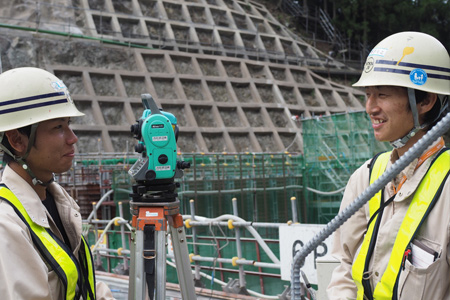
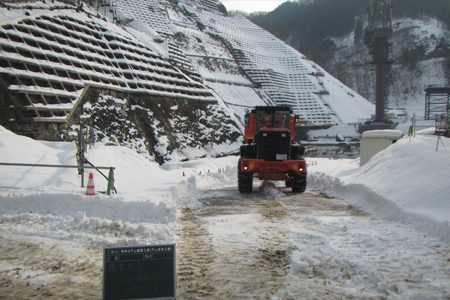
Recognizing the expectations of local residents
Another purpose of building the dam is to stimulate the local economy.
Prior to the start of work, the Fukui Prefectural Government held a briefing for local residents living in the four districts of Kouchi, Kumagawa, Shindo, and Wakaoji in the Kumagawa area. “This briefing really demonstrated the great expectations the Fukui Prefectural Government, the Wakasa-cho Town Government and the local residents had for the dam,” says Mr. Okuda, project manager. Together with the Kumagawa-juku post station, they hope the Kouchigawa Dam will serve as a tourist attraction that acts as a boost for the local economy. In addition to quickly completing the project and ensuring the quality of the dam, another key objective is to help the local community prosper.
The project is now in the main stages, with nearly 100 dump trucks carrying concrete aggregate entering and leaving the site every day. We make it a point to keep local residents informed of the progress of work and ensure drivers are considerate and aware of their needs. It is also important to closely monitor the life cycle of the mountain hawk eagles, such as their nesting period and their mating period, to avoid affecting their growth. In addition to paying close attention to local residents, we must also be equally aware of the wild animals, given that the dam is being built to create a brighter future for all life living in the region. Construction has yet to reach its height, but we will continue making steady steps forward with the local community to building the future for all.
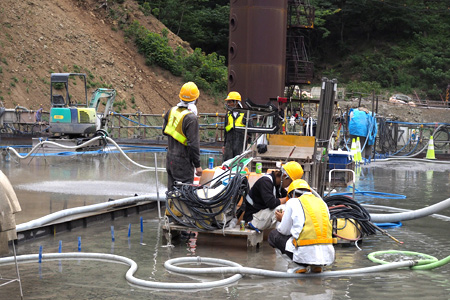
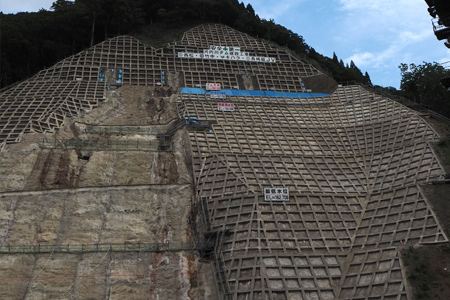
It is vital to build good relationships with neighbors to ensure construction is tightly managed.
But more importantly, we are building the dam as a member of the Kumagawa community.
Construction started 30 years after the project was approved. As many of the local residents grew older, they began to voice their concerns about whether or not the dam would be finished during their lifetime. Hearing the hopes of the local residents, the project office was filled with zealous vigor. “All staff at the project office became even more determined to meet the deadline schedule and build a sound dam. A feeling that we were already members of the Kumagawa community naturally developed as we moved forward with work.”
The emerging recognition of being members of Kumagawa led employees to become actively involved with the local community in their everyday lives. Many different events are held throughout the year in Wakasa-cho and Kumagawa-juku. The sheer number of these events, such as those that attract tourists and those that have been carefully passed down for generations, is simply astonishing. In addition to providing official opportunities for exchange, such as construction briefings and on-site tours for local residents, we also help with events organized by the Wakasa-cho Town Government. Some of our employees playing the roles of evil characters in super-hero shows, run booths at events to distribute cotton candy to children, and compete in athletic contests. We also dedicate kadomatsu New Year decorations to local shrines and lend a hand with get-togethers for watching fireflies. These activities have helped us become fully established within the local community. “The project is what brought us to work here. Naturally we need to get the job done, but in having the opportunity to live and work here, we really hope to experience all the different things Kumagawa has to offer as part of the community. Our time here will be indispensable to all of us staff.” All the personnel, including Mr. Okuda, look genuinely happy. Involvement in the local community helps enhance the level of communication inside the project office and implement work safely and smoothly. Building a dam together with the local community is not only about constructing something nice. It also means that we do what local residents consider to be normal.
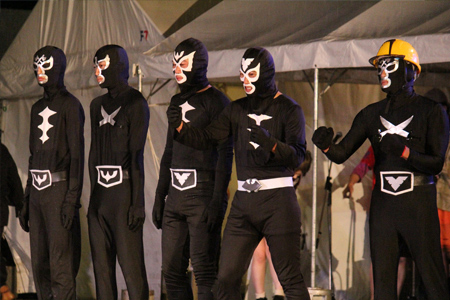
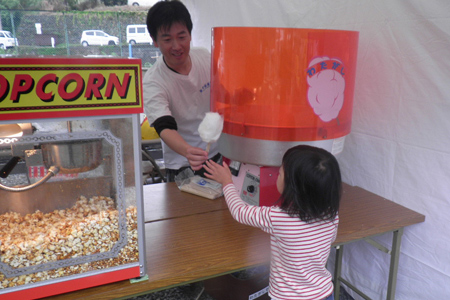
Already making an impact on the local community.
Responding to the ardent local desire to make more people smile.
Kumagawa was once a post-station town, and thus historically it has been open to outsiders. In addition to its old townscape, the warmth of the local residents attracts a large number of tourists. Mr. Akechi, manager of the Kumagawa Community Center, Mr. Fujimoto, chairman of the Kumagawa District Community Development Council and other individuals are spearheading efforts to preserve the townscape and organize events. Their work reflects the dedication of local residents working together to build the community. Mr. Fujimoto says with a smile of relief, “In the past, flooding claimed the lives of young people. We have waited a long time for this dam, so I’m happy to hear that work is finally on track.” Even so, the completion of the Kouchigawa Dam is by no means the end goal for the town. Kumagawa also faces problems such as an aging population and the decreasing number of children. The main challenge from now on will be to revitalize the local economy and create a town in which young people choose to live. The people look forward to the completion of Kouchigawa Dam strongly because it will form a large part of the infrastructure vital to developing a safe and active community.
“It is most important to ensure that people living here feel full of life. We are working out different plans for numerous events that will liven up the community” says Mr. Akechi. “After Mr. Okuda and other staff began taking part in our events after the project office opened, the events have become more active than before. While they are busy, they respond to our various requests. We hope to reinvigorate Kumagawa together with them.” He expressed his great expectations for the project office staff as a partner for community development. The sense of solidarity with the local community may serve as a key driving force of the Kouchigawa Dam construction.
